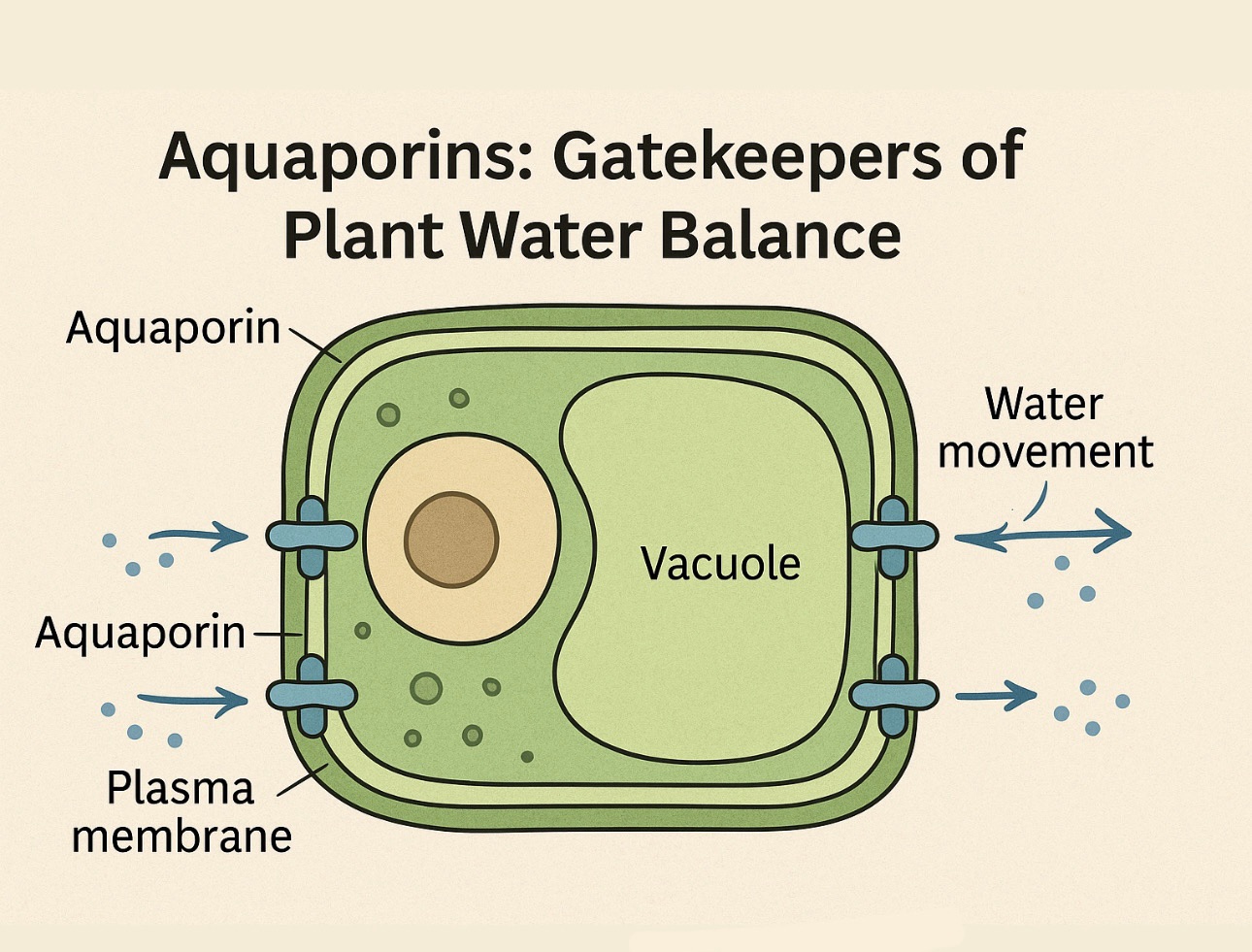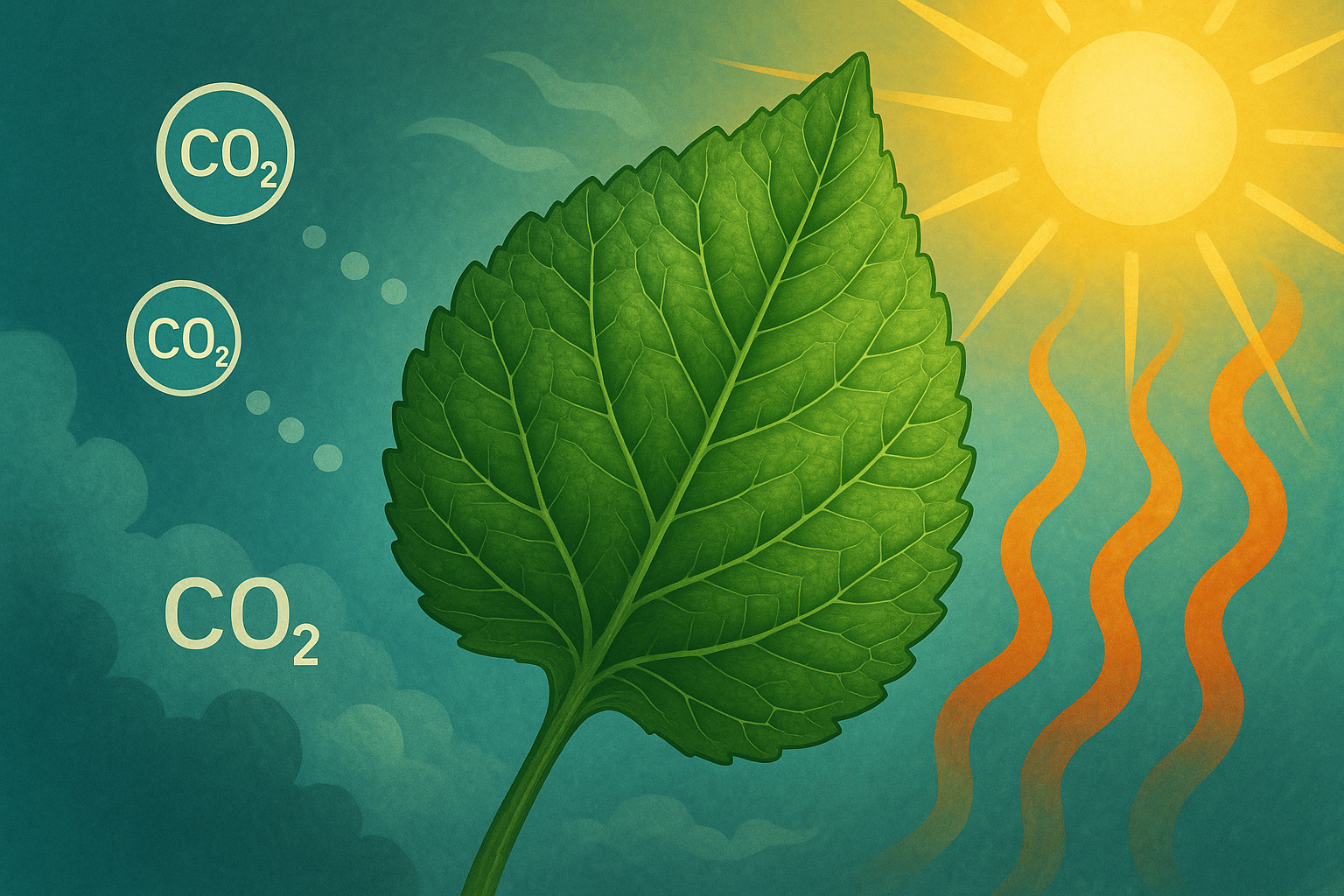Water is indispensable for plant life, serving not only as a solvent and reactant but also as a structural component that maintains turgor pressure and facilitates nutrient transport. The journey of water from soil to atmosphere through plants—termed the soil–plant–atmosphere continuum (SPAC)—is critical for plant survival. Despite the abundance of water in nature, plants often struggle to access and efficiently utilize it, particularly under drought, salinity, and temperature extremes. This brings us to the unsung heroes of plant water regulation—aquaporins.
Aquaporins (AQPs) are integral membrane proteins that facilitate the transport of water and, in some cases, small solutes across cellular membranes. These proteins are not passive conduits; rather, they act as selective gatekeepers, finely tuning water movement in response to environmental cues. Over the past two decades, a wealth of research has uncovered their pivotal roles in hydraulic conductivity, stress responses, nutrient transport, and even plant development.
This blog delves into the structure, classification, functions, regulation, and stress physiology of aquaporins, emphasizing their critical contribution to plant water balance.
Aquaporins: The Basics
Aquaporins belong to the major intrinsic protein (MIP) superfamily. They are characterized by six transmembrane helices with both N- and C-termini located on the cytoplasmic side. A defining feature of aquaporins is the NPA (Asn-Pro-Ala) motifs—two conserved loops that meet in the center of the channel and form a selective pore for water passage.
Although aquaporins were first discovered in animals, their presence in plants is extensive and functionally diverse. Most plant species encode a large number of aquaporin genes, reflecting the complexity of plant water relations.
Classification of Plant Aquaporins
Based on sequence homology and subcellular localization, plant aquaporins are categorized into several subfamilies:
Plasma membrane intrinsic proteins (PIPs): Localized on the plasma membrane, primarily involved in regulating water influx and efflux. Tonoplast intrinsic proteins (TIPs): Located on the vacuolar membrane; regulate water exchange between the cytoplasm and vacuole. Nodulin-26 like intrinsic proteins (NIPs): Found mainly in roots; often transport small solutes including boric acid and silicon, in addition to water. Small basic intrinsic proteins (SIPs): Mostly located in the endoplasmic reticulum; their functions are less understood. X intrinsic proteins (XIPs): Present in some dicots; exhibit broader substrate specificity. GlpF-like intrinsic proteins (GIPs) and Hybrid intrinsic proteins (HIPs): Less common, with limited known function.
Among these, PIPs and TIPs are most intensively studied due to their direct role in regulating plant water balance.
Aquaporins and Water Transport
The efficiency of water transport in plants is largely governed by aquaporins, especially under conditions where passive diffusion is insufficient. Their role becomes particularly important in tissues with high water flux demands such as roots, leaves, flowers, and developing seeds.
Aquaporins enhance the hydraulic conductivity of membranes, facilitating rapid water movement in response to osmotic gradients. For example, PIP aquaporins allow root cells to rapidly absorb water from the rhizosphere, while TIP aquaporins enable turgor regulation in guard cells and storage tissues.
The expression and activity of aquaporins are dynamically regulated to fine-tune water uptake and loss based on environmental cues, ensuring that water supply meets the plant’s physiological demands.
Regulation of Aquaporin Function
Aquaporins are regulated at multiple levels:
1. Transcriptional Regulation
Environmental stresses such as drought, salinity, cold, and flooding influence the expression levels of aquaporin genes. For instance, during drought, specific PIP genes are downregulated to reduce water loss, while under flooding, some are upregulated to facilitate oxygen transport.
2. Post-translational Modifications
Aquaporin activity can be rapidly modulated via phosphorylation, dephosphorylation, methylation, or pH changes. Phosphorylation often activates aquaporins, while dephosphorylation leads to their closure.
3. Gating Mechanisms
Aquaporins have dynamic gate-like structures controlled by pH, calcium levels, and reactive oxygen species (ROS). For instance, during oxidative stress, ROS-mediated signaling can lead to aquaporin gating to prevent water loss or damage.
4. Subcellular Trafficking
Aquaporins can be relocalized to or from the plasma membrane based on stress conditions. Such trafficking allows rapid adjustment of water permeability at the cellular level.
Aquaporins in Plant Development
Beyond water transport, aquaporins influence key aspects of plant growth and development:
Seed Germination: TIP aquaporins are essential for vacuolar expansion during seed imbibition. Cell Expansion: By regulating turgor, aquaporins facilitate cell elongation, particularly in growing root and stem tissues. Flower Opening and Pollen Maturation: TIPs contribute to osmotic adjustments in floral tissues, ensuring proper reproductive development. Root Architecture: PIPs modulate lateral root emergence and root hair elongation by altering local water fluxes.
Thus, aquaporins are indispensable not only for water regulation but also for the morphogenesis and organogenesis of plants.
Aquaporins Under Abiotic Stress
Plants must modulate water transport rapidly under stress conditions. Aquaporins play a dual role—amplifying water uptake when needed and restricting water loss during stress.
1. Drought Stress
During drought, aquaporin expression is tightly regulated. Some PIPs are suppressed to minimize water loss, while others are induced in deep-rooted tissues to maximize water extraction. Genotypes with higher aquaporin expression in roots often show better drought tolerance.
2. Salinity Stress
Under salt stress, excessive ion accumulation can lead to cellular dehydration. Some NIPs help in the exclusion of toxic ions, while PIPs adjust membrane permeability to maintain osmotic balance. In some halophytes, aquaporins support water retention even in high-salinity environments.
3. Cold Stress
Low temperatures reduce membrane fluidity and water uptake. Specific PIPs are upregulated under cold conditions to improve hydraulic conductance. Aquaporins also aid in cold acclimation by facilitating compatible solute movement.
4. Flooding and Hypoxia
Waterlogged conditions limit oxygen availability. Some NIPs and PIPs allow oxygen diffusion, helping plants tolerate hypoxic stress. In rice, for example, aquaporins support the formation of aerenchyma—tissue that aids internal air transport.
Aquaporins and Phytohormones
Aquaporin function intersects with plant hormone signaling:
Abscisic Acid (ABA): Under drought, ABA induces PIP downregulation in guard cells to promote stomatal closure, conserving water. Cytokinins and Auxins: These hormones modulate aquaporin expression during cell division and elongation. Ethylene: During flooding, ethylene signaling influences aquaporin-mediated responses to hypoxia.
Hormonal crosstalk thus provides a fine control system, integrating environmental signals with aquaporin activity to optimize plant water use.
Genetic Manipulation and Aquaporins
With advances in genomics and biotechnology, aquaporins have emerged as targets for genetic engineering to improve stress resilience. Several transgenic approaches have demonstrated the potential of aquaporin overexpression:
Overexpression of OsPIP1;1 in rice improved drought tolerance and photosynthetic efficiency. AtPIP1;2 and AtPIP2;1 overexpression in Arabidopsis led to enhanced water-use efficiency. In maize, suppression of specific PIPs reduced water loss and improved salt tolerance.
However, care must be taken, as overexpression in inappropriate tissues or conditions can lead to undesired water loss or developmental abnormalities. Tissue-specific promoters and inducible systems can offer precise control.
Challenges and Future Directions
Despite considerable progress, several questions remain:
How do aquaporins interact with other membrane transporters? What are the long-term effects of aquaporin manipulation on plant productivity? Can aquaporins be edited using CRISPR/Cas systems for precise improvement?
Understanding aquaporin diversity across crops and identifying elite alleles will be crucial for developing climate-resilient varieties. Moreover, multi-omics approaches integrating transcriptomics, proteomics, and metabolomics can unravel the complex regulation of aquaporin networks.
In the era of climate-smart agriculture, aquaporins hold the potential to enhance crop performance under water-limiting conditions, reduce irrigation needs, and ensure sustainable productivity.
Conclusion
Aquaporins are central players in the orchestration of water dynamics within plants. Far from being mere water channels, they function as responsive gatekeepers that regulate water fluxes in harmony with developmental cues and environmental signals. From enabling seed germination to guiding stress resilience, aquaporins touch every corner of plant physiology.
Harnessing their potential through breeding, biotechnology, and molecular understanding could redefine how we cultivate plants in an increasingly water-scarce world. As we continue to uncover the intricacies of these remarkable proteins, one thing is clear—managing water wisely in plants starts at the membrane level, with aquaporins leading the charge.










